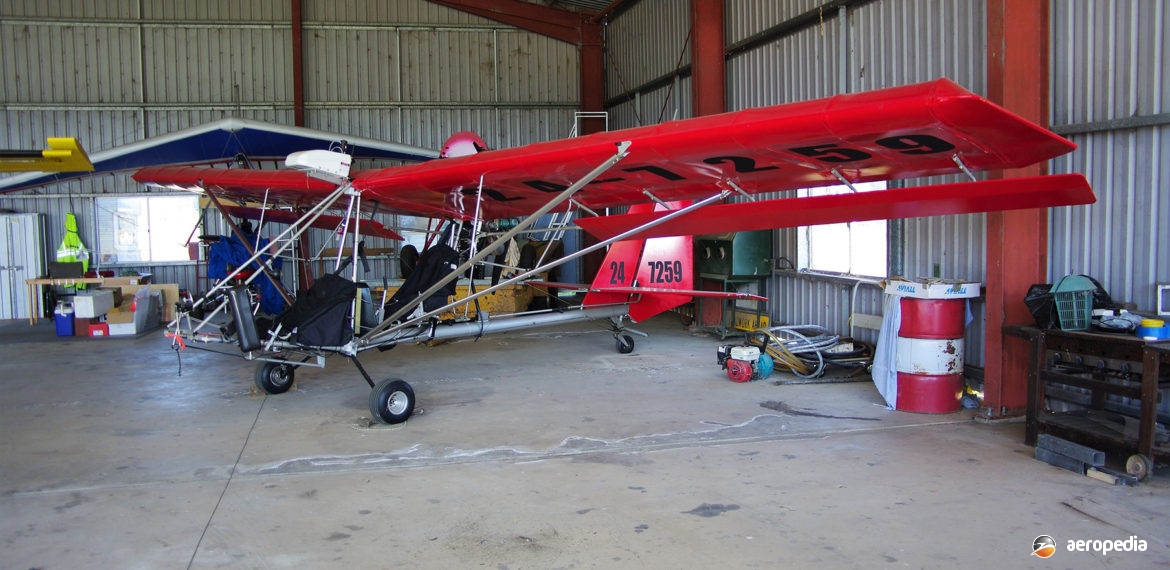Photograph:
Bailey Moyes Dragonfly 24-7052 (c/n C107) at Narromine, NSW in October 2016 (David C Eyre)
Country of origin:
Australia
Description:
Two-seat light sport monoplane
Power Plant:
One 48 kw (65 hp) Rotax 582UL-2V two-cylinder, two-stroke, liquid-cooled, electronic dual-ignition engine
Specifications:
- Wingspan: 10.36 m (34 ft)
- Length: 5.97 m (19 ft 6 in)
- Height: 2.31 m (7 ft 6 in)
- Wing area: 15.8 m² (170 sq ft)
- Max speed: 106 km/h (66 mph)
- Max cruising speed: 74 km/h (46 mph)
- Economical cruising speed: 56 km/h (35 mph)
- Stalling speed power on: 26 km/h (16 mph)
- Stalling speed power off: 31 km/h (20 mph)
- Rate of climb 427 m/min: (1,400 ft/min)
- Service ceiling: 4,877 m (16,000 ft)
- Range: 161 km (100 miles)
- Take-off distance to 15 m (50 ft): 59 m (195 ft)
- Landing distance from 15 m (50 ft): 111 m (363 ft)
- Empty weight: 150 kg (330 lb)
- Loaded weight: 363 kg (800 lb)
History:
The Bailey Moyes Dragonfly , also kjown as the LiteFlite Dragonfly,was one of a range of ultralight aircraft produced by Moyes Microlites Pty Ltd of Waverley, NSW and was initially available in kit form for the amateur builder. In later years it was produced in some numbers by LiteFlite which referred to it as the ‘Great Australian Bush Plane’. It was of 6061 steel tube construction and was structurally supported by stainless steel wire with fabric covering. Power was usually provided by either two-stroke or four-stroke engines and a range of options was available to meet the requirements of the purchaser and financial constraints. It was a three-axis ultralight aircraft with slow flying ability and was able to operate from small blocks of land. It had dual controls for training and has been used for livestock management on large properties.
The machine was designed by Mr Robert Bailey in Orlando, Florida, USA in 1993 and was aimed at the market for a light aircraft to be used specifically for towing hang gliders to altitude. It was of tailwheel undercarriage configuration with a pusher engine mounted above the wing and behind the two pilots. Controls were standard stick and rudder. The fuselage was a large main boom attached to the pilot area with aluminium tubing.
Examples have been sold around the world for hang glider towing work and some examples in Europe have been fitted with floats.
.

